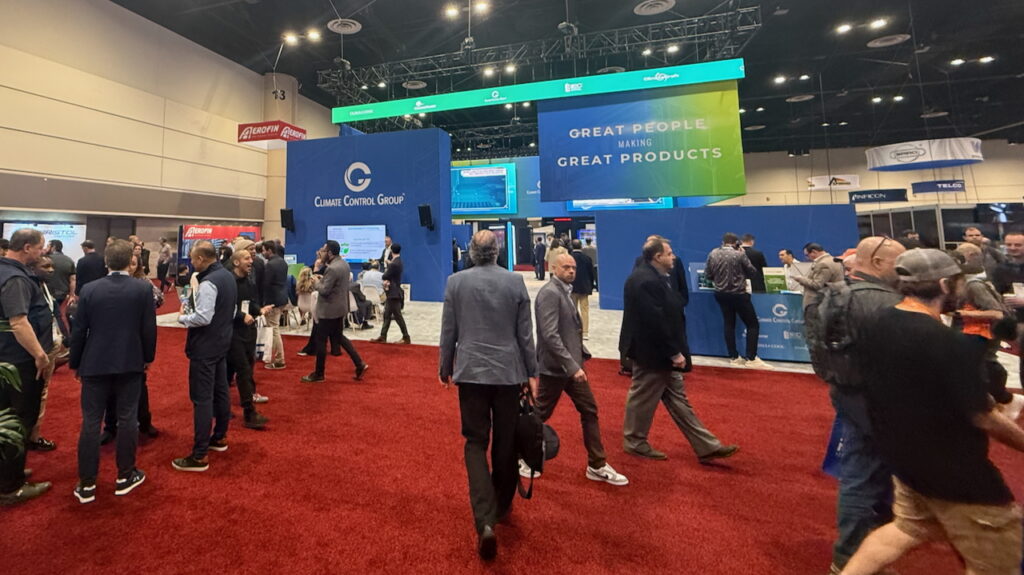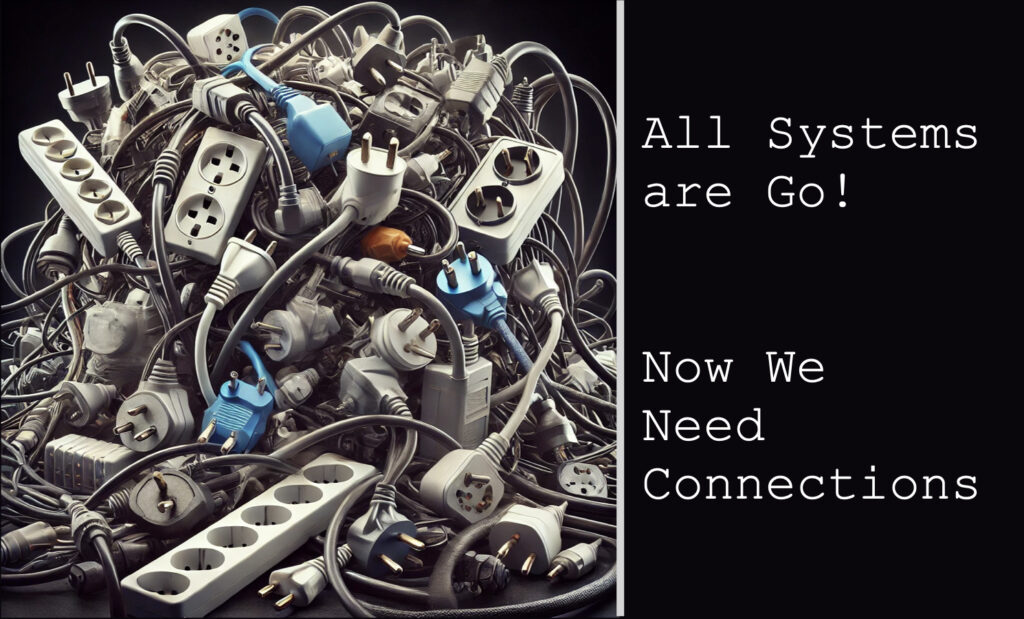AHR Expo 2025 Insights Part 2
Walking the floor at AHR Expo 2025, one thing was impossible to miss:
Thousands of equipment manufacturers were there—showcasing hardware that already has the tech needed to run smarter, more efficient buildings.
I was at the show with a specific mission in mind:
To explore how Digital Twins and BIM could connect directly to building automation systems and controls.

But what I found was both encouraging and frustrating.
- The technology is there.
- Manufacturers want to connect.
- They’re willing to work with any protocol that owners demand.
But there’s still a wall in the way—legacy protocols that control too much of the ecosystem.
When the cameras were off and the conversations went deeper, a clear pattern emerged:
- “We’re stuck with legacy systems that have too much control over these protocols.”
- “We want to connect—but the pathways are blocked.”
- “It’s about time someone fixed this.”
Many vendors—while outwardly cautious—were quietly excited about the potential of the Linux Foundation, Coalition for Smarter Buildings (C4SB) the Interoperable Building Box (IBB) and its open-source Connection Profiles.
The IBB could be the missing link that finally unites Digital Twins, BIM, and building automation systems—breaking through legacy barriers and giving owners real control.
The challenge? Owners need to push for it.
Because here’s what I saw on the AHR floor:
- Digital Twins are already built for connections.
- Manufacturers are intrigued by open standards—but many were hearing about IBB for the first time.
- Most echoed the same sentiment: “If owners push for it, we’ll support it.”
So, the tech is here. The interest is real. The pathway? It’s IBB—but only if owners demand it.
Let’s hear directly from some of the vendors.
Mitsubishi Electric (ICONICS): The Last Mile Is Still Broken
Tom Wohlwender, ICONICS, Mitsubishi Electric
ICONICS manages massive facilities like LaGuardia Airport and the Pentagon, but even at that scale, there’s one persistent problem:
“The last mile is the critical one.”
Key Takeaways:
- Supports BACnet, Modbus, MQTT, but acknowledges their limitations.
- Legacy systems still create bottlenecks—especially at scale.
- The Linux Foundation’s IBB? “We’re intrigued. It could fix a lot of these issues—but owners need to push for it.”
ABB: Waiting for the Standard That Owners Choose
Robert Palmer, ABB
ABB is a global powerhouse in building automation and electrification—and they’re interested in open connection protocols.
Key Takeaways:
- Energy optimization is their focus—but true optimization requires data from every system.
- They’re ready to adopt open standards—if owners demand it.
Bobby’s takeaway:
“We can integrate almost anything—if there’s a clear, secure standard.”
Climate Control Group: From AC Manufacturer to Data Company
Kevin McNamara, CEO
Based in Oklahoma City, Oklahoma, with six factories and 1,200 employees, Climate Control Group is evolving beyond manufacturing air conditioning equipment—they’re becoming a technology company that unlocks hidden building data.
Key Takeaways:
- They’re sitting on valuable performance data—but it’s often trapped within systems.
- CEO Kevin McNamara wants that data to help owners improve efficiency and sustainability.
Kevin’s takeaway:
“We’ve got the data—now owners need the tools to use it.”
Hurst Boiler: Already Built on Linux—Ready for More
Jesse Ames, Hurst Boiler
Hurst Boiler is already ahead of the game, running Linux-based controls that make system integrations easier—but they’re still waiting for the right standard to make cross-system connections seamless.
Key Takeaways:
- Built on Linux—flexible, open, and scalable.
- Supports a range of protocols, including OPC UA, and is eager to explore connection profiles.
- The IBB? “We’re ready for it—if owners and integrators push it forward.”
Jesse’s takeaway:
“The groundwork’s laid. We’re just waiting for the glue.”
Bubll: Digital Twin ROI in Three Weeks
Dave Lapsley, Founder of Bubll
Bubll is a fully functional digital twin platform that pulls together disparate systems into a single, user-friendly interface—and it’s already delivering ROI in just three weeks.
Key Takeaways:
- Sentinel Platform connects fragmented systems into a cohesive digital twin.
- Three-week average ROI—a result of rapid optimization and cost savings.
- Bubll works with existing protocols, but open standards would make integration even faster and more scalable.
Dave’s takeaway:
“The tech’s here. The ROI’s here. Now we just need to connect it all faster.”
Final Thoughts: The Tech Is Here—Connections Are Needed
The problem isn’t that the industry lacks solutions.
The problem is that every solution is still playing in its own sandbox.
The Linux Foundation’s IBB and its standardized connection profiles offer a path out—but it’s up to owners to push for it.
Owners hold the key to:
- Eliminating proprietary barriers
- Enabling true interoperability
- Unlocking faster ROI and reducing total cost of ownership
And owners are starting to speak up. Just look at what Clint Davis from Denver International Airport said:
“If your system is locked down, your days of forced monetization are coming to an end.”
The tech is ready. The tools are here. Now it’s time to make the connections.
Read Part 1 of the AHR Interviews in this previous post.



